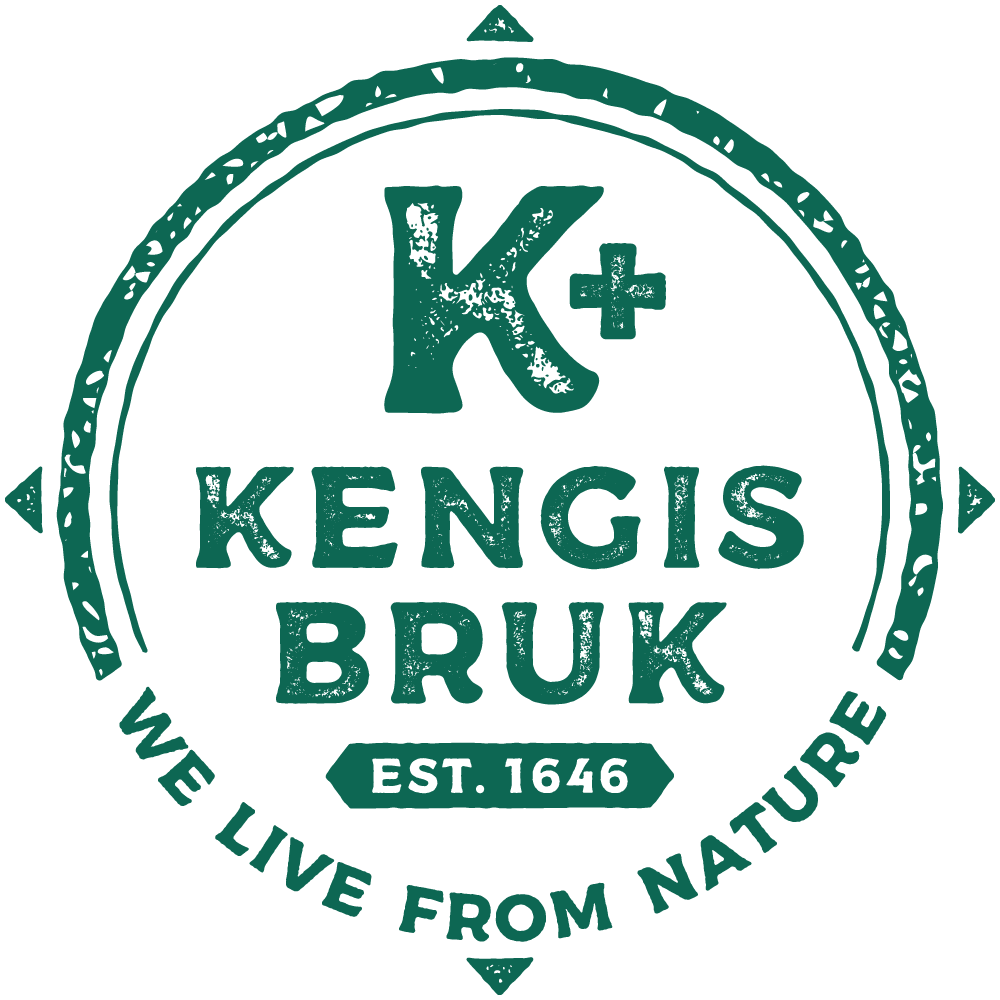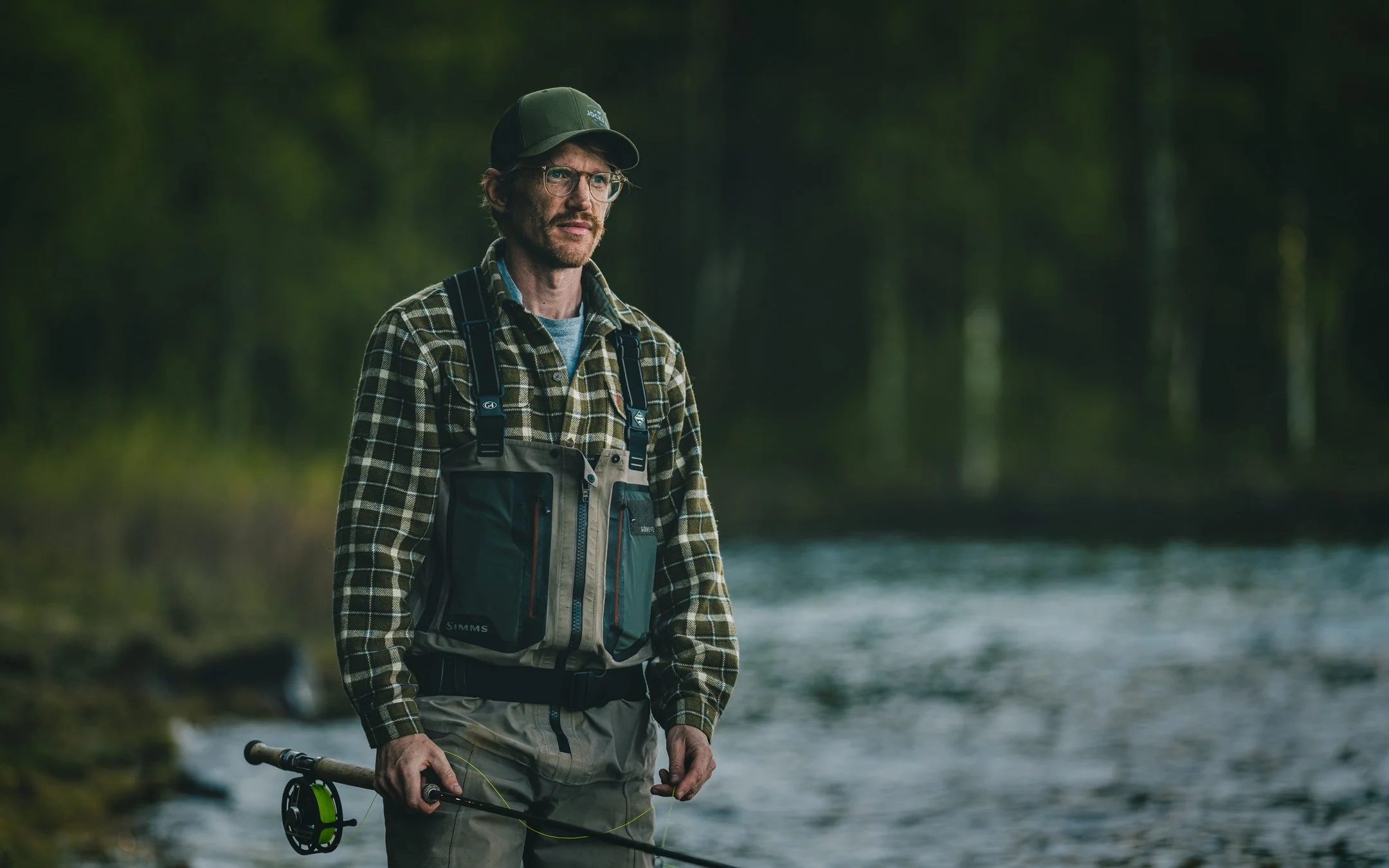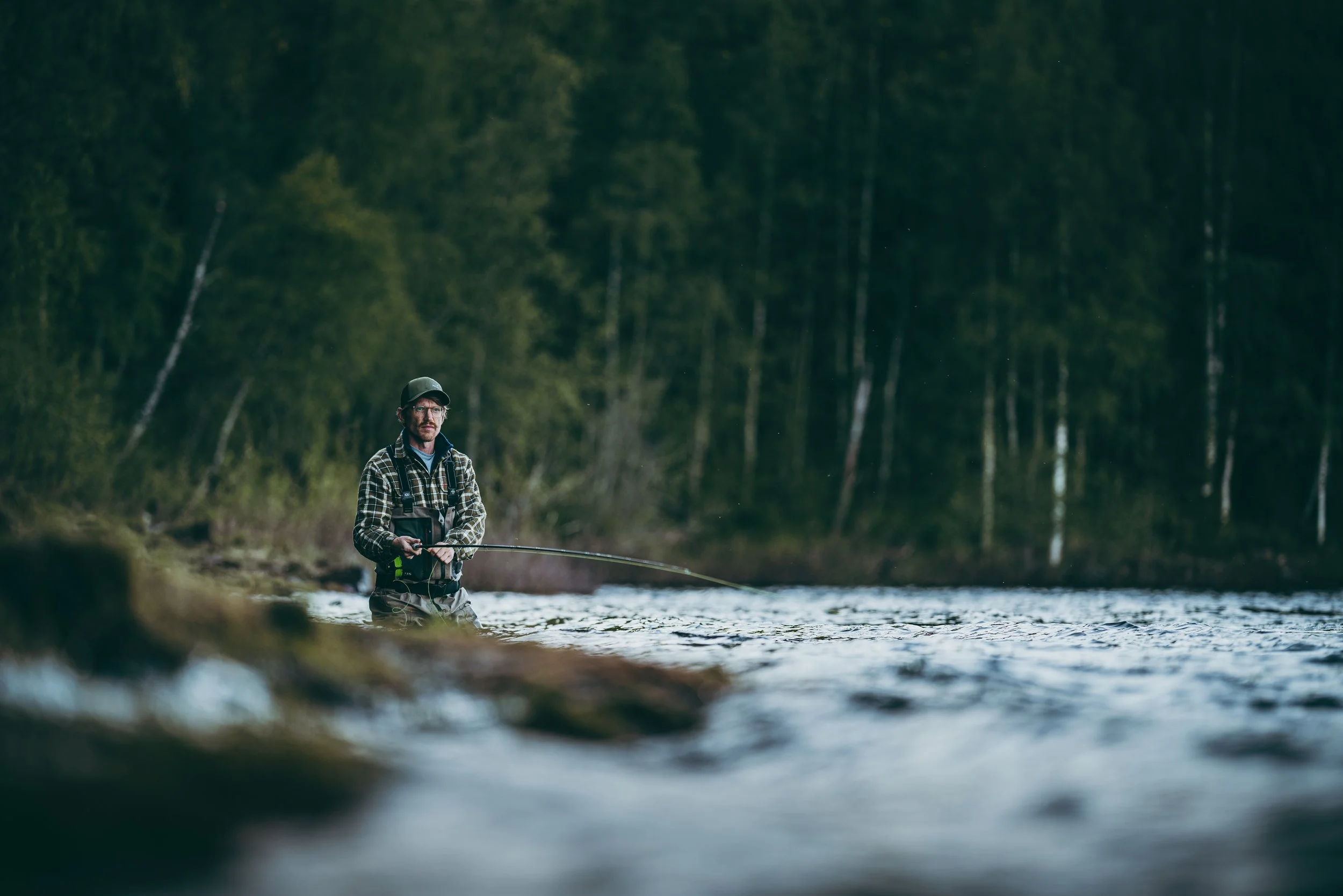Gustav Hellström interview
This time we asked Gustav some important questions about the Baltic salmon and his own fishing.
Gustav knows a lot about the Baltic salmon and look at things in another perspective because of his job.
Give yourself a few minutes to read about his thoughts.
Can you give us a short introduction to yourself?
“I´m a fish biologist at the Swedish University of Agricultural Sciensce, where I work with questions related to management and conservation of fish. My research involves a lot of fish tracking using transmitters and stuff to understand what the fish are doing out there in the rivers, lakes and sea.”
When did you start to fish?
“Since I can remember. Spent most of my childhood and youth fishing. I started fly fishing in my teens and became pretty obsessed with it. I have fished for salmon for the last 25 years. I definitely have the spirit and excitement for that kind of fishing, but I need to start catching more fish, this is getting slightly embarrassing.”
Why do you fish?
“Not sure. No one in my family fished when I was little. They say that human behavior that can be seen across the globe in all kinds of independent cultures likely has a genetic underpinning, so I guess my fishing interest is some sort of instinct at the very core. But in general it's an awesome way to get out in nature. Really love to see my kids slowly getting more and more interested as well. It's such a natural way for them to become aware and eganged in nature and the aquatic ecosystems.”
What is the biggest problem in the Baltic sea according to you?
“Man there are so many problems. Overfishing is definitely a big part, maybe the biggest. When you have an ecosystem that is as disturbed as the Baltic Sea, you should really be very careful in applying even more pressures, such as large-scale trawling of pelagic fish. I'm frankly surprised that this fishery is allowed to continue, even when politicians in power at the very top have advocated for regulation. Almost seems to be some other forces acting beneath the surface here...”
Is it possible to reach an average of 100.000 fish passing the counter each year? If yes, how?
“Yes definitely possible. Maximum number of spawners in Torneälven is far from reached. The bottleneck definitely seems to occur during the sea phase. Allowing as many spawners as possible to reach the spawning grounds is key in this stage of the population rebound. At some point the amount of spawners contributing to production will be maxed out, likely at several hundred of thousands of fish in the Torneälven. At those levels, the commercial fishery would be able to catch significantly more salmon than what they do today without affecting the prodution. But we need to allow the population to reach that point first, and that will mean increasing the number of spawners that can reach the spawning grounds.”
If you could make the decisions, what would you do to protect the Baltic salmon?
“The thing is that a lot of good things have already been done, if you compare with 20-30 years ago when the management was a true shitshow. In that sense, the baltic salmon can be seen as a success story as many populations have recovered significantly. But the recovery has slowed down in recent years. At this stage, I think we need to apply the principle of precaution, especially when it comes to large-scale fishery such as the pelagic trawling. I also think fishing salmon for private consumption with commercially graded gear is problematic. Very few other regions in the world with wild Atlantic salmon allow that.”
Is catch and release a good way of protecting the baltic salmon? Why?
“Yes, but with caveats. Several studies show that C&R for salmon in rivers works if done correctly, in the sense that the salmon survive and seem to participate in spawning.
From a management perspective, C&R can be seen as a win-win regulation, as you can utilize the resource while not affecting the conservation status. It also almost has a democratic dimension, as it in theory allows more people to fish and come in contact with wild salmon instead of regulating participation via a strict catch quota. However, an extensive no-kill fishery is probably not the way to go here, at least not in our neck of the world where we have a deep-rooted harvest-oriented culture. As with all of these regulation methods, they need to be applied with common sense in mind.”
What is your biggest dream when we talk about fishing?
“Well the biggest dream of them all is to kick life into all the big regulated rivers we have in northern Sweden. Those rivers have been some insane systems back in the day, both for salmon and trout. But I guess we´ll need some breakthroughs in cheap and safe energy production before even start thinking about tearing down those dams. A less ambitious dream is to get our smaller ”forest-catchment” rivers up to their true potential. A lot of work is already going on here by both government and NGOs, especially to improve the habitat in the rivers and to allow salmon to freely navigate the coast and enter the river. “
Thank you to Gustav!
Tight lines!
Aslak
Photos: Ted Logart










